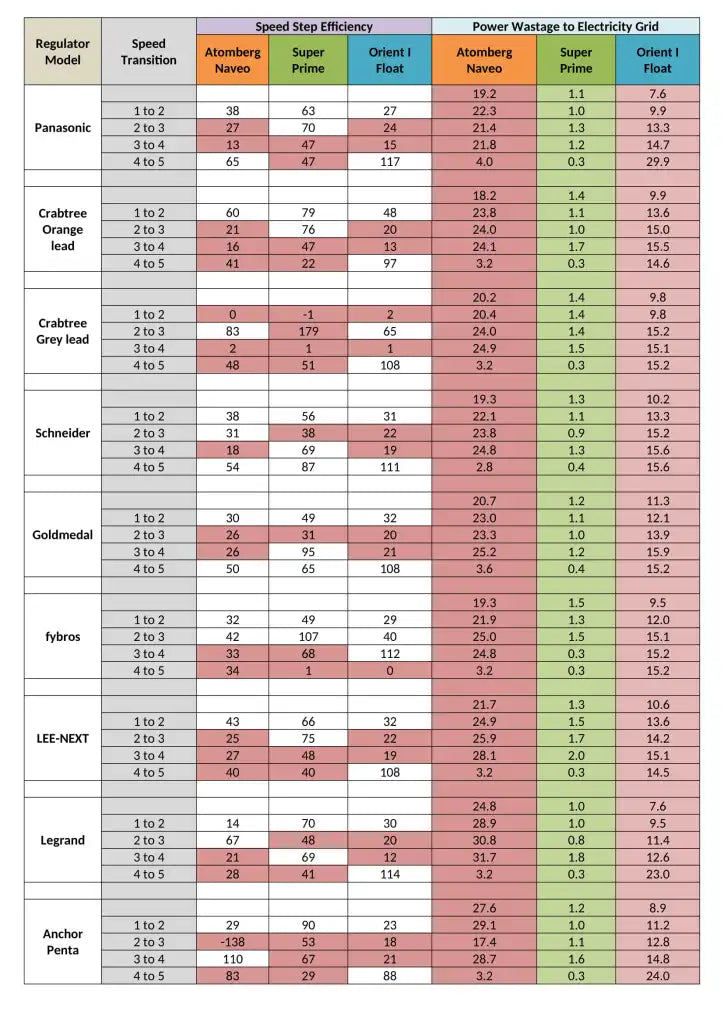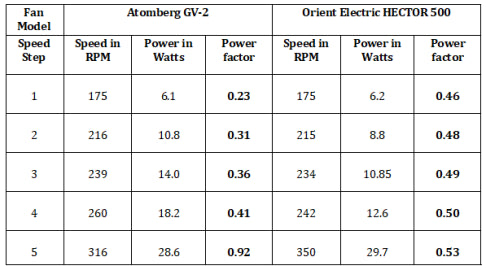
REGULATOR BLDC CEILING FANS
FROM SUPERFAN, INDIA’S FIRST SUPER ENERGY EFFICIENT CEILING FAN
The function of a regulator is to provide the user with control over the fan. This control comes with a loss of power. Therefore, it is good to choose the type of regulator that minimizes this loss (To know more read: What does a fan regulator do? ). Regulators also save energy as the user can operate the fan at the desired RPM, which may be lower than the highest RPM in many instances.
Currently, capacitive-based regulators are the best choice. The capacitive regulators available in the market are designed for regular ceiling fans. These regulators control the input voltage supply to the fan, thereby the motor reacting to it. In an AC induction motor (regular ceiling fan), the speed (RPM) of the fan is directly determined by the input supply, hence these regulators work very well for them.
In the case of BLDC fans, the RPM of the fan is controlled by the micro-controller in its hardware circuit. When the capacitive regulator controls the input supply to the fan, the microcontroller must detect the input and appropriately set the speed of the fan. This is simple if all the regulators in the market control the input supply the same way at all speed steps. In reality, the regulator models behave differently within the brand and across the brands. This variation makes it difficult for the micro-controller to react correctly and adhere to the ceiling fan standards IS374:2019. BLDC ceiling fans have stricter compliance requirements than a regular ceiling fan.
Recently, including us, Atomberg and Orient have released regulator fans. This development required considerable trade-off to achieve suitable operation. The trade-off was mainly ‘Power Factor (PF)’, which is the measure of wastage of electricity for our country’s electricity grid to power the appliance. If PF is 1.00, then there is no wastage to our electricity grid, according to the fan standards, the PF of a ceiling fan must be greater than 0.9 at the highest speed. A simple estimate of the electricity wastage is the ratio of power consumed and the PF. If the fan consumes 35 W and the PF is 0.9, then the actual power derived from the grid is 35/0.9= 38.9W, the consumer is billed for only 35 W but the grid would have supplied 38.9 W, so our electricity grid suffers a loss of 3.9W. Imagine the huge number of ceiling fans in the country, the loss for our country’s electricity grid will be significant.
Please find the tabulated results from our internal tests below: (All the fans are regulator-compatible BLDC fans)
Test: Comparing the speed regulation and Power Factor between three different regulator BLDC fans with various regulator models.

Table 1
From the table 1, it is noticeable that there are instances where each of the fans performed poorly in speed regulation, i.e., the speed difference between two steps is not significant enough and inconsistent (refer to the highlighted cells under speed step efficiency columns in table 2). Superfan maintains higher PF at all speeds across all regulator models than the other BLDC fans, using the power supplied from the electricity grid the most optimally (refer to columns under power wastage to the electricity grid).

Table 2*Calculations derived approximately for a fair understanding of inefficient speed regulation in BLDC fans using regulators and its power wastage to the electricity grid.
The speed regulation has to be improved in all 3 models to be better compatible with the existing regulators. But Superfan regulator solution is better for overall performance than the other regulator BLDC fans in the market due to the high power factor at all speeds.
Superfan designs their BLDC fans to share its benefits with its consumers, the environment and our nation. As a ceiling fan buyer, it would be prudent to consider ‘Power Factor’ during the buying process.
Update 1: 5thAugust 2021
Recently Superfan demonstrated this regulator-based BLDC design at a large hospital institution in South India. During the demonstration other regulator BLDC fans were tested and compared (refer to table 3).
The results of the test of Atomberg GV – 2 and Orient electric Hector 500 as measured:

The results once again show that Superfan regulator BLDC design is better in terms of Power Factor and Speed regulation.
Update 2: 11th August 2021
Superfan regulator BLDC design has been granted a patent. This is the 4th patent granted for the BLDC design of Superfan. Superfan continues to be the technology leader in the Indian fan industry by pushing the industry standards towards progress for others to follow.
Patent Information:
Speed control system for BLDC motor based fan using wall mounted regulator and method thereof
Contact us at 1800 425 78737 or email at superfan@superfan.in to learn more.
